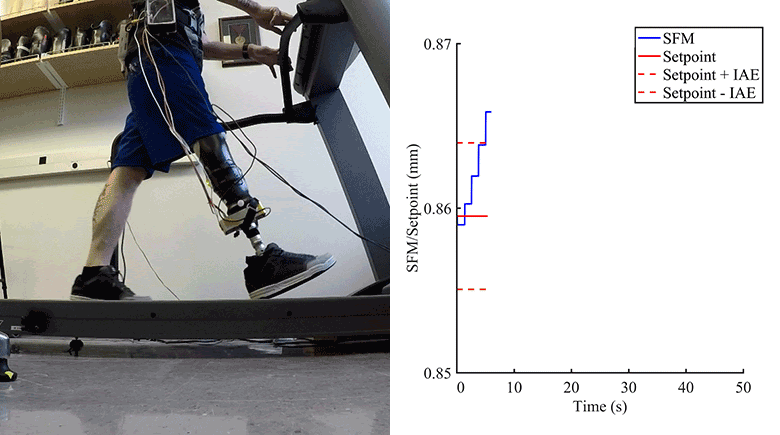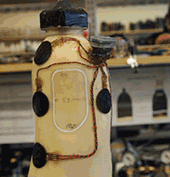
Socket fit is reported the single-most important issue faced by people with limb amputation. Daily changes in socket fit are caused primarily by changes in limb volume, which in turn cause changes in the distance between the limb and socket. Adding or removing socks or pads is the most common way to accommodate for volume fluctuation, but these methods are reactionary after the user senses discomfort or pain. Further, they are often inconvenient and require users to stop what they are doing to fix their prosthesis. Auto-adjusting sockets have been proposed to overcome these challenges, but an observable, time-varying measure of socket fit that may be automatically controlled by adjusting the socket size has yet to be achieved.
Sockets with motor-driven adjustable panels that covered about 10% of the surface area of the socket were constructed for study participants. Distance from a thin antenna embedded in the socket wall to a ferrous elastomeric liner worn on the participant’s residual limb was sensed. The controller was a regulator that continuously sensed distance and adjusted the socket geometry to maintain a prescribed reference fit set point. The set point was selected by the practitioner and participant during clinical fitting. Test results showed that the controller maintained the set point within microns and responded within seconds to a change in set point.
The system is ready for clinical evaluation outside of the laboratory, testing in participants’ at-home environment. This novel technology may relieve prosthesis users of the burden of continually thinking about their socket fit and adjusting their socket size to maintain fit.

